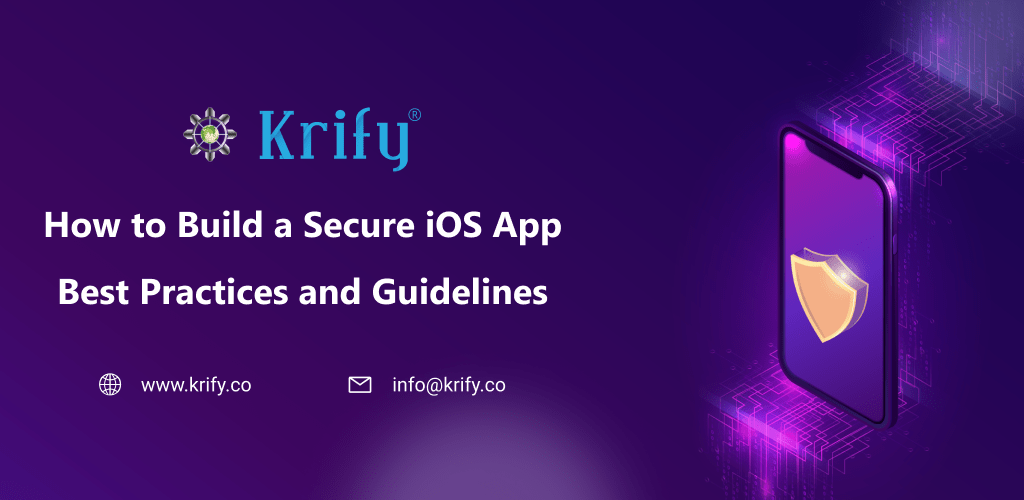In the ever-expanding realm of mobile app development, with millions of new apps surfacing each year, the importance of prioritizing secure iOS app development practices cannot be overstated. This blog article will explore the fundamental Best Practices for Developing Secure iOS App.
Guidelines to Build a Secure iOS App
1. Secure Code
Writing safe code is one of the most crucial aspects in developing a secure iOS app. Verify that the code you produce is devoid of vulnerabilities that attackers may exploit. This involves eliminating hard-coded values, implementing data encryption, employing secure communication protocols, and utilizing trustworthy libraries and frameworks.
2. Use Secure Communication Protocols
Instead of HTTP, utilize secure communication protocols such as HTTPS for transferring data over the network. HTTPS encrypts data as it is transferred, making it impossible for adversaries to intercept and read it. Additionally, always validate the server certificate to ensure that no man-in-the-middle attackers are intercepting the communication.
3. Implement Two-Factor Authentication
Adding two-factor authentication to your iOS app may offer an extra degree of protection. It adds an extra step to the login process, making access to user accounts more difficult for attackers. Users can use a password in conjunction with a second factor such as a fingerprint, facial ID, or a one-time code emailed to their registered cellphone number or email address.
4. Encrypt Sensitive Data
Make sure to encrypt sensitive data such as passwords, user credentials, or payment information when storing it. This makes accessing and stealing data more difficult for attackers. Apple provides keychain services that allow you to securely store sensitive data.
5. Use Security Features Provided by Apple
Moreover, Apple offers a number of security tools that may be utilized to improve the security of your iOS app. For instance, Touch ID, Face ID, biometric authentication, and sandboxing are all examples of this. Additionally, sandboxing allows you to limit your app’s access to the device’s resources, preventing harmful apps from obtaining sensitive data.
6. Regularly Update Your App
Regularly upgrading your app can aid in the repair of vulnerabilities and security concerns. Additionally, make sure to fix any security issues discovered in previous versions of your app, and apply all available Apple security patches.
7. Conduct Regular Security Audits
Frequent security audits can assist in the identification of vulnerabilities and security problems in your iOS app. Hire a professional security firm to perform regular audits and penetration testing on your app to identify and fix any vulnerabilities.
8. Use Encryption for Data at Rest
Data at rest refers to data stored on a device or server. Encrypting data at rest makes it more difficult for attackers to access if they compromise the device or server. iOS employs several encryption techniques for encrypting data at rest.
Conclusion:
By adhering to the “Best Practices for Developing Secure iOS Apps,” as outlined above, you can ensure that your app remains resilient against potential threats. It’s crucial to consistently update your app and conduct regular security audits to detect and address any vulnerabilities effectively.
Krify’s team of developers, who are well-versed in the latest trends and best practices in technology, develop robust mobile and web applications, making Krify renowned in the field. If you would like to know more about iOS apps, we have our team of professionals who would be happy to assist you on the same. For more information, contact us.



